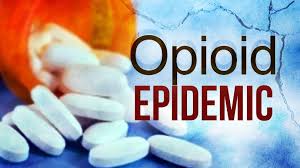As the country continues to grapple with an ever-increasing opioid addiction crisis, the medical profession and patients alike struggle to treat real pain issues while managing their pain safely.
Sherry McAllister D.C., M.S (Ed)., CCSP, executive vice president of the Foundation for Chiropractic Progress recently answered some questions from Minority Nurse about how to navigate this tricky path. October happens to be National Chiropractic Health Month and is a good time to begin thinking about managing chronic pain with medication-free methods when possible and safely with medication when it is necessary.
“The human toll of prescription opioid use, abuse, dependence, overdose, and poisoning have rightfully become a national public health concern,” McAllister says, noting that opioid drug abuse was named an emergency by President Trump. “The sheer magnitude of America’s prescription opioid abuse epidemic has evoked visceral responses and calls-to-action from public and private sectors. As longtime advocates of drug-free management of acute, subacute and chronic back, neck, and neuro-musculoskeletal pain, the chiropractic profession is aligned with these important initiatives and committed to actively participate in solving the prescription opioid addiction crisis.”
What can concerned patients and health care teams do? “Begin treating pain with conservative options first,” says McAllister. Many people suffering from pain just want it to go away and often hope the pain medication will hasten that. As nurses know so well, pain medication treats the symptom, but not the underlying problem. “But the opioid emergency demonstrates that masking pain can lead to long-term persistence of both the pain and the drug use,” she says.
The necessity for finding alternatives that will help people without exposing them to the risk of addiction or dependence is clear. “Data released by the Centers for Disease Control and Prevention (CDC) revealed that ‘opioid deaths continued to surge in 2015, surpassing 30,000 for the first time in recent history,’” says McAllister. The rates continue to rise.
Often addiction starts with something as simple as dental work or as common as a back injury. McAllister cites an April 2017 report on lower back pain in the Annals of Internal Medicine that “strongly recommends non-pharmacological treatment” that suggests a long list of first-line alternatives including heat, massage, acupuncture, exercise, multidisciplinary rehabilitation, mindfulness-based stress reduction, tai chi, yoga, motor control exercise, progressive relaxation, electromyography biofeedback, low-level laser therapy, operant therapy, cognitive behavioral therapy, or spinal manipulation.
If those options don’t work, moving on to medication trials of non-steroidal anti-inflammatory medications (like Aleve or ibuprofen) or muscle relaxants should be tried. Opioids are considered an option if all these other methods have failed to provide necessary relief. But they should only be prescribed after assessing each individual case and with a discussion with the patient about realistic pain management expectations and what the risks are.
Nurses can help deliver information about pain management options to their patients while not minimizing the impact chronic pain has on their lives. They can encourage therapies that don’t include medication and back it up with the proven evidence that these approaches help patients in the long term.
Opioids, in particular, can also cause a host of associated health problems, with addiction being the most well-known. But patient’s bodies can also become adjusted to the drugs and require increased does to deliver the same pain relief. McAllister recommends Chiropractic: A Key to America’s Opioid Exit Strategy or Chiropractic: A Safe and Cost-Effective Approach to Health for more information.
- WOC Nurses Week Highlights Specialty - April 16, 2024
- Honoring Radiology Nurses Day on April 12 - April 12, 2024
- Travel Offers New Career Possibilities - April 8, 2024



